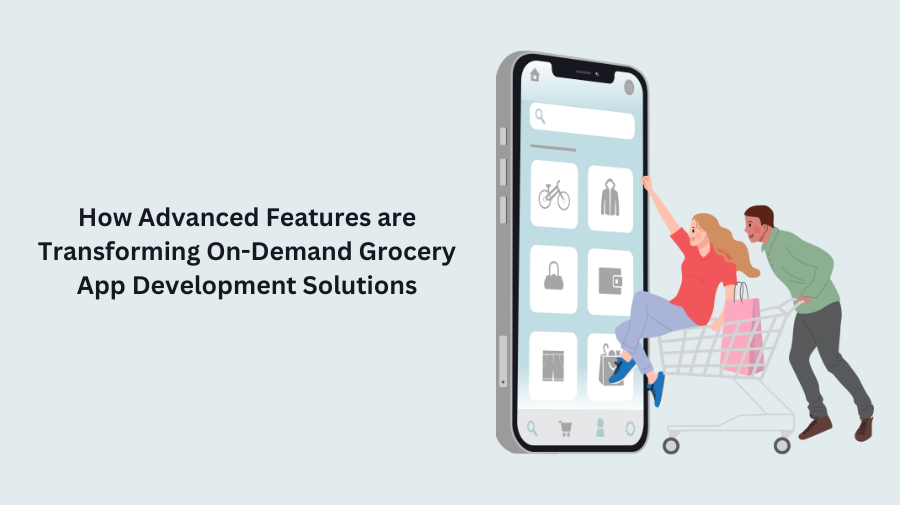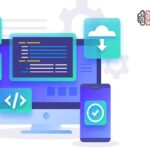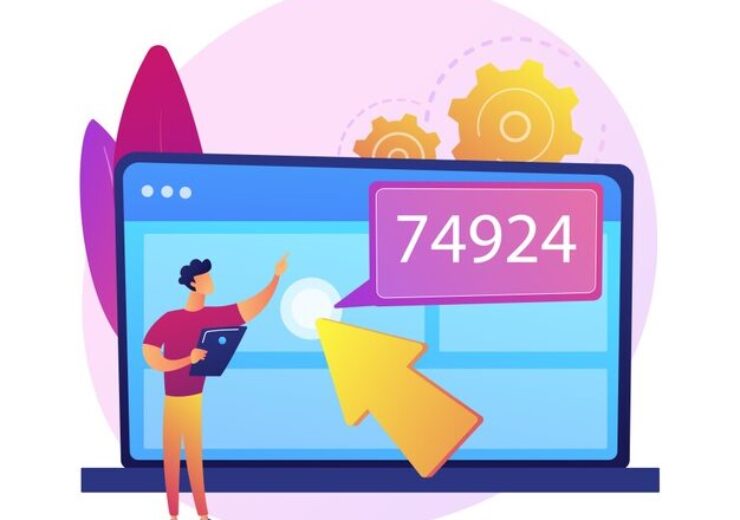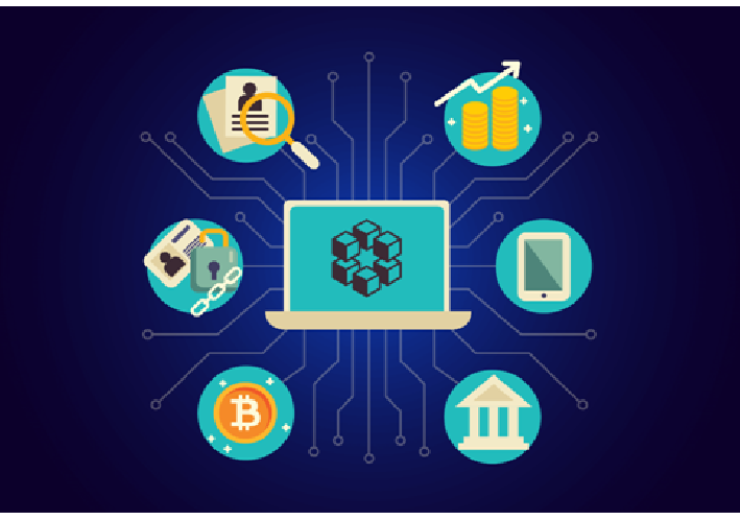How Advanced Features are Transforming On-Demand Grocery App Development Solutions

On-demand grocery delivery apps have experienced an exponential increase due to the pandemic and the subsequent closing down of businesses. When going outside was limited and staying connected dangerous, food delivery apps became innovative in meeting basic needs.
Today, on-demand grocery delivery app development services are not limited to satisfying daily grocery requirements; they also create and improve consumers’ lives. To anyone who can barely afford the time to go out to seek urgent supplies, on-demand delivery is convenient. This entails that based on your order when placing an order through an app, the groceries are delivered to your doorstep as arranged. Today, you can order whatever you want through an app, and it will be brought to you within the shortest time possible.
Advancements in technology, especially in the online platform, have increased the demand for goods and services without hitches. Hence, this has triggered grocery apps, and thus, business people and grocery shop owners have considered this new trend. Grocery-ordering apps have become necessary for many consumers and businesses that are too busy to spare time for physical shopping. They have helped to grow the grocery app development market mainly because the demand for groceries is rising.
Delivery Business Models: Grocery Delivery Apps
—————————————
The Global On-Demand Grocery Delivery Application Market runs through the following business models, explaining various ways in which customer demand is met. Here are the key models:
- Catalog Model ( for instance- Big basket)
In this model of e-commerce, an e-commerce store buys the inventory products from different suppliers and assembles a warehouse. It is also responsible for handling the stock, orders from and to the customers, customer relations, and delivery.
An example of this model is BigBasket. The food delivery application BigBasket is currently serving 25 cities in India. Through it, people can order groceries and other essential items; they purchase products in bulk from manufacturers like P&G, HUL, and Fresho and avail services from 12 warehouses. Unlike marketplaces, BigBasket directly owns stock, meaning that it is directly involved in the supply of products as a retailer, not as a mediator who lists sellers.
- Store front Model (e. g. , Instacart)
The Marketplace model involves a range of buyers and sellers who are associated with a single virtual selling interface. The sellers arrange the packaging and distribution or dispatching, and the marketplace operator arranges the dispatching.
Instacart exemplifies this model. It is an interface solution that connects consumers with specific grocery stores. Thus, Retail partners, Customers, and Shoppers (both full-service and in-store) are the three levels engaged in Instacart’s strategy. Instacart earns its revenue from markup prices for its products, delivery charges, subscription fees, service charges, pickup charges, and partners’ remunerations.
- Hybrid Model
Unlike the other models, the Hybrid model provides a rich mix of inventory and marketplace models to suit customers’ needs. It combines the ability to shop online with being physically inside a store, offers a store pickup option, and uses store vendors to fulfill orders.
Among the examples of the hybrid type, one can name Amazon Fresh. Now it unites large stocks in its centers for safe and efficient shipments and cooperates with grocery store owners and food vendors for exclusivity.
The key features of a grocery delivery application are as follows:
—————————————
A successful grocery delivery app hinges on three main components: In the system, there are three software, namely the Customer App, the Delivery Person App, and the Admin Panel. Each of them has a significant role in delivering e-commerce companies’ ecosystems. If provided with proper features, they provide a great experience to end users, grocery stores, and aggregators. Here’s a breakdown of essential features for each component
Customer App Features
—————————————
User Login: Allow social sign-in options for social media accounts, phone numbers, or emails so that users can sign into the app faster and with ease.
Google Maps Integration: There should be a feature to automatically fill in the users’ details, especially the addresses, so that one does not have to type them himself/herself whenever he/she is ordering.
Quick Search and Browse: Categorize and subcategorize products with concise descriptions to help the user find what they are looking for faster.
Available Offers: Place the discounts and coupons before the point of ordering with the intention of making the user apply them, thus reducing the number of cart abandonments.
Live Location Tracking: This allows users to display the approximate location of the order in the process and the time it takes to prepare each step, among other things.
Notifications: Always share the progress of the orders through popup notifications on the status of acceptance, packaging, order collection, dispatch, and delivery.
Schedule Orders: Let users place their order and be able to choose the delivery time in available time slots.
Payment Options: Include e-wallets, UPI, net banking, debit/credit cards, cash on delivery, and a convenient payment option for shoppers.
Order Cancellation: To increase versatility, allow users to refuse orders within a certain period, such as 30 minutes.
Feedback: Include a feature where the ordering customer can rate the app based on their experience after using its services.
Delivery Tip: Allow users to donate money for exceptional delivery service to appreciate the work done by the delivery people.
Delivery Person App Features
—————————————
- Registration/Login: Allow delivery personnel to create accounts and sign in using personal information to ensure the right people access the app.
- Order Details/Management: The delivery persons should be provided with the option to show the open order requests and get approval on accepting or rejecting any of the orders.
- GPS/Live Tracking: Use GPS navigation to help delivery people locate delivery places and recommend relevant directions.
- Delivery Status Updates: Present choices that can allow users to change the status concerning the delivery and inform customers about the order status in text or email.
- Delivery History: With regard to inventory, observe the number of deliveries that have been achieved and the total money collected.
Admin Panel Features
—————————————
- Profile Management: Manage accounts for products, retailers, drivers, and customers to successfully and efficiently operate and organize them.
- Dashboard: It provides a general view of all application-related activities, such as orders, deliveries, payments, and more.
- Order management: Track order statuses and allocate them to available delivery staff members to ensure prompt processing.
- Report management: Produce monthly and daily reports on transactions, registrations, and other vital data.
- Notification Management: Based on past customer orders, send out reminders about special offers, order updates, and other pertinent information.Customer comments on services, app performance, and retailers can be accessed and managed through feedback management.
- Report generation: Create monthly and daily reports on transactions, registrations, and other relevant information.
- Notification Management: Use past customer orders to send out notifications about special deals, order updates, and other relevant information. Feedback management allows you to access and manage customer comments about services, app performance, and shops.
How to Design a Robust On-Demand Grocery Delivery Application
—————————————
Designing an on-demand grocery delivery app involves several distinct sections, each crucial for creating a cohesive final product. This process can be viewed through an Agile methodology, where each phase contributes to the overall design.
1. Customer Side
This element is aimed at the people who downloaded the app from the store. Moreover, it should have rich features and functionalities to meet customers’ expectations during shopping. The customer side has to be smooth, which means customers should be able to search for a product, order, or track their orders easily.
2. Admin Side
The management panel is designed for an app administrator and plays an enormous role in the app’s functioning. It is a very sensitive area that must be appropriately designed and developed because any problem in this area will significantly impact delivery outputs and schedules. From the end-user’s perspective, it deals with the customers’ orders and their support, which cannot be sidelined on the administration side to warrant efficient app function.
3. Delivery Person App
This component is essential in the flow of the delivery process. The interface is intended for delivery employees who carry groceries to clients or customers. It mobilizes both the sellers and the delivery people hence setting up the logistical chain for delivering the products sold. They should be able to track the delivery and the route of the vehicle in addition to arranging communication between the seller and the buyer of a product.
Conclusion
In this context of the future of digital marketplaces, it is important to underline that on-demand app development plays a critical role in modern company management. The nature of planning and executing these services requires one to have adequate knowledge of app costing. It’s imperative for new startups, as well as other organizations, to constantly adapt to this terrain financially so that they are able to compete in a society pegged on convenience and personalized services.
A key aspect in this process is, therefore, the choice of partners – the right partners will have a proportional effect on the quality of the outcome. Furthermore, using efficient and inexpensive measures can aid the companies in initiating and expanding the apps without incurring exorbitant costs. Great on-demand home service app are a mix of both great IT solutions and excellent user experience, no matter what type of app it is, grocery delivery, for example.
The future of on-demand app development is filled with potential. With ongoing advancements in technology and a growing user base, new entrants have ample opportunities to succeed. Embracing flexibility and innovation will be key for those aiming to make their mark in the evolving on-demand economy.




